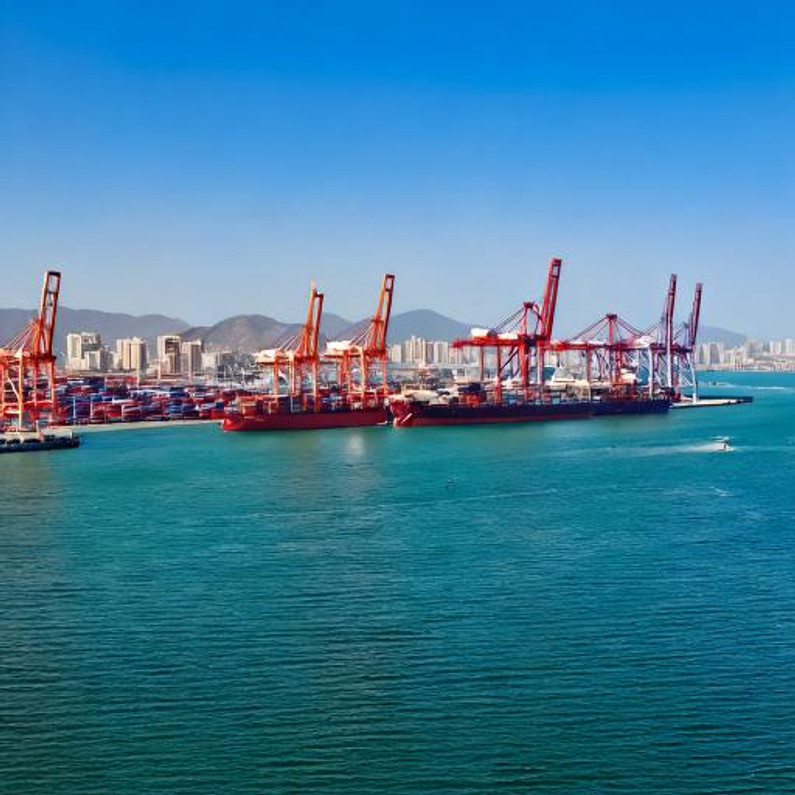Longshoreman's Union Strike on the East Coast and its Effects
The Longshoremen's union strike on the East Coast began on October 1, 2024, involving over 47,000 workers at 36 ports. The primary issue was a demand for a $5 per hour wage increase and changes to container royalties. The strike significantly impacts supply chains, causing economic losses estimated at up to $4.5 billion per day. The dangers of a work stoppage, particularly in industries such as port operations, can be significant and far-reaching. Here are just a few key risks:
1. Economic Impact
- Disruption to Supply Chains: A strike at major ports can halt the flow of goods, including perishable items, industrial components, and consumer products, leading to shortages and higher prices. This disruption can ripple through various sectors, affecting manufacturers, retailers, and consumers.
- Lost Revenue: It is estimated that the recent Longshoremen strike could cost up to $4.5 billion per day in lost economic activity, with sectors such as transportation and agriculture hit hardest.
- Job Losses: Temporary work stoppages can lead to layoffs in related industries, such as trucking and warehousing, resulting in a loss of income for thousands of workers.
2. Political and Social Consequences
- Political Pressure: Prolonged strikes can create significant political pressure, as they impact voters' daily lives and the broader economy. For instance, the recent strike placed strain on the Biden administration, which faced demands from both business groups and unions to intervene or stay neutral.
- Community Impact: A port strike can lead to shortages of essential goods in local communities, including food and medical supplies, impacting public health and well-being.
3. Logistical Backlogs and Delays
- Port Congestion: Ports affected by a work stoppage can become severely congested, with cargo piling up and ships forced to anchor offshore, causing weeks of delays even after the strike ends.
- Increased Costs for Businesses: The delays and increased transportation costs due to rerouting or warehousing lead to higher operational expenses for businesses.
4. Long-term Contract Negotiation Issues
- Future Labor Relations: A contentious strike can damage the relationship between labor and management, complicating future negotiations and potentially leading to a cycle of recurring disputes.
These risks highlight why industries and governments often prioritize swift resolution to prevent a prolonged work stoppage from causing widespread damage.
Temporary Solution and Interim Deal - October 3, 2024
After three days, the union and port operators reached a tentative deal to
temporarily suspend the strike until January 15, 2025, allowing time for
further negotiations. The tentative
agreement includes several key terms. The International Longshoremen’s
Association (ILA) and the U.S. Maritime Alliance agreed on a temporary contract
extension through January 15, 2025, allowing for more time to negotiate a
permanent solution. The terms so far include a wage increase for the workers,
though specific details on the percentage of the raise have not been finalized.
The initial proposal included a 50% wage increase over six years, which the
union rejected, calling it "unacceptable."
Additionally, the agreement addressed concerns about automation, with the employers agreeing to limit, but not ban, the use of automation at ports. This issue remains a significant point of negotiation for the final contract, however for now, it seems we’ve avoided the worst-case scenario. While we are sure there will be minor affects felt by our operation for a short amount of time, the team here at Induction Lighting Fixtures will do all we can to keep things running smoothly.
Recent Posts
-
How Long Will Solar Powered Lighting Operate in the Rain?
How Solar Light Fixtures Can Run for 10 Rainy Days If you’ve ever wondered how a Commercial solar li …Jul 30th 2025 -
Spotlight - The IL-SPG54 Smart Solar Walkway Light: Where Performance Meets Simplicity
Introducing the IL-SPG54 Smart Solar Walkway Light: Where Performance Meets Simplicity When it comes …Jun 16th 2025 -
Corn Bulb Sale - While supplies last!
⚡ Limited Time Sale – BLE Series Corn Lamps Starting at $24.99! Stock up now while supplies last – p …Jun 11th 2025






